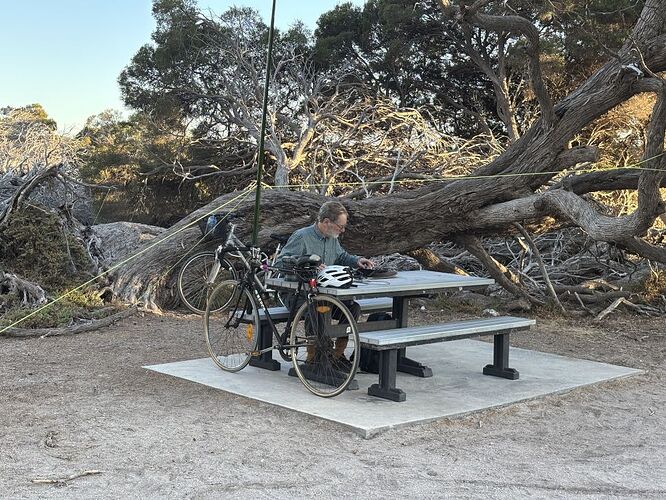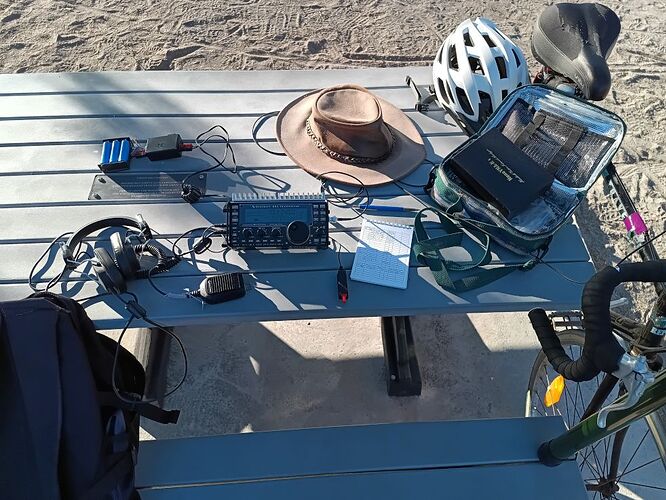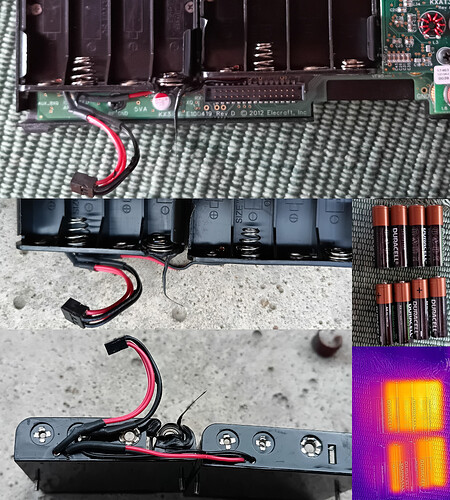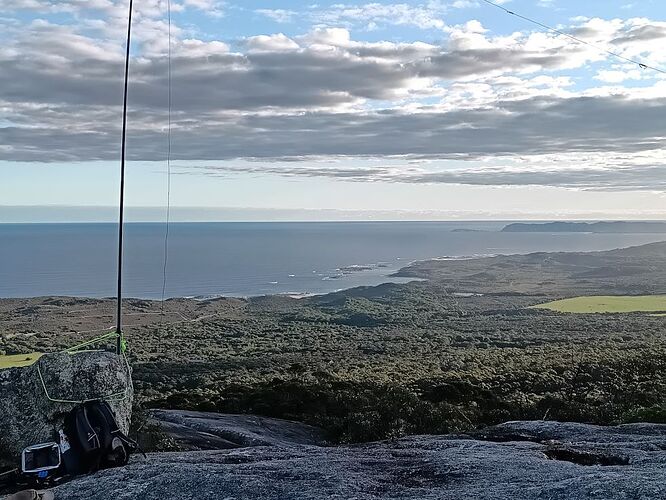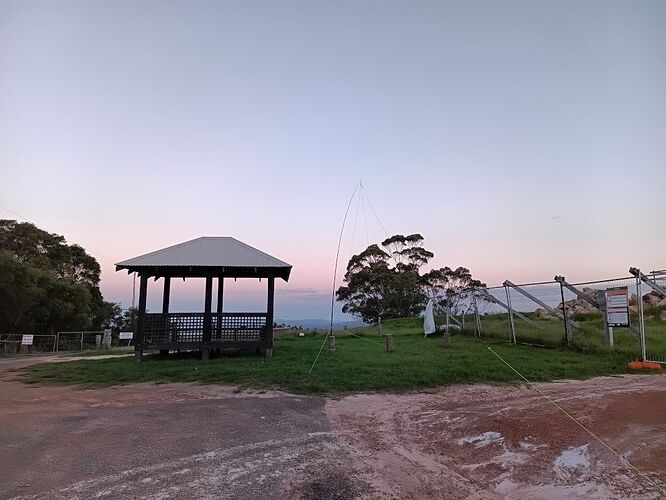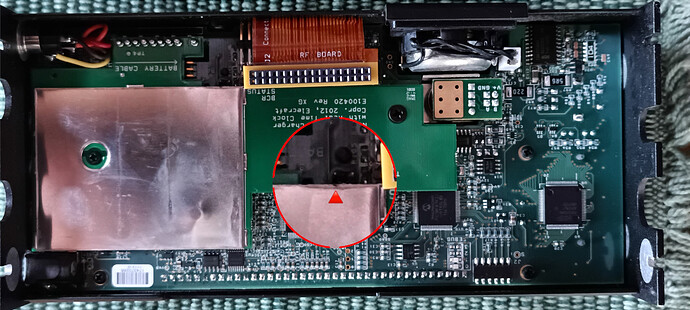I recently returned from a holiday to visit my sister in Australia. We were away for almost four weeks. Obviously, in a holiday that long there should be at least a small chance of getting on the air, and I wanted to activate at least one Summits on the Air (SOTA) summit during my stay, so I took some equipment with me. I knew that we would be spending most of the time away from my sister’s home, so any operating I did manage to do was likely to be of the light-weight portable variety. I took my Elecraft KX3 and my QRP Labs mid-band QMX, a charger capable of giving a LiPo battery pack a balanced charge, a link dipole to cover the bands from 40 to 15 metres, a couple of “flowerpot” antennas for 10 and 15 metres, and a compact fibreglass flag pole with assorted guy lines and pegs. Taking LiPo batteries onto planes is not always that easy, but I found a shop near my sister’s home where I could easily buy some 18650 LiPo cells, so I took a couple of suitably wired-up empty battery holders. In the end I only bought three LiPo cells, enough for one pack, but that proved sufficient for most of the operating I ended up doing.
We spent the first fortnight of our holiday on Wadjemup, also known as Rottnest Island. The accommodation on the island is mostly in the form of self-catering chalets, and they usually don’t have any space nearby upon which an antenna can be erected, so operating in comfort with mains power is generally not possible. There are, however, quite a few picnic sites around the island, and I found a handy one near Pink Lake, a short cycle ride from our chalet, at which I could set up my antenna without getting in anyone’s way, and because it’s away from the beaches I could also expect not to be disturbed all that much. It was, however, rather a hot spot during the middle of the day, so I generally limited my on-air time to a couple of hours or so after sunrise and before sunset.
My initial plan was to test the antennas I’d made just before the holiday. I’d done the work in my back garden at home, and there was a very good chance conditions on the island and on a summit would be different, so some testing seemed like a good idea. In Europe I find a good way to give an antenna a quick test is to put out a call on CW and see how many reverse beacon network (RBN) skimmers pick it up. There are far fewer skimmers near Western Australia, so second best was to try to work a some stations I could hear. During my first couple of on-air sessions I managed to raise a grand total of zero contacts, and no RBN skimmers picked me up either.
I was glad I’d brought my NanoVNA along for the ride. It turned out that the links for 15 metres on my dipole, which quite happily brought the antenna to resonance around 21.1 MHz when set up in my damp hillside garden in Dursley on the edge of the Cotswolds, were instead leaving me with a dipole resonant at about 22.6 MHz when set up over a flat sandy ground near Pink Lake. Luckily I’d brought a couple of stubs with bullet connectors along, and a rather more comfortable resonance could be achieved by adding them at the link point and then carefully trimming them. Some of the other bands also needed a little adjustment, though none of them were as far out as the 15 metres band, and I found a good match could be achieved using just one of the stubs.
Having worked out how to get the antenna to resonate at a suitable frequency on each of the bands for which it had links, it was time to see whether I could now make contacts. I decided to try playing the Parks on the Air (POTA) self-spotting game as a way of raising contacts. I managed to get a number of contacts (mostly in Japan) on 15 metres one evening, and a few more (mostly from within Australia) on 20 and 40 metres the following morning. The 17 and 30 metres links also seemed to be working well enough after the adjustments, and the POTA spots brought in more than enough contacts to keep me busy.
Inevitably, given I was on an island, Islands on the Air (IOTA) was brought to my attention. It’s a little more work to run an IOTA activation than it is to run a SOTA or POTA one, but enough emails were arriving (even given the less than wonderful Net connection available to me on the island) to make me give it some thought. I continued to operate using the POTA self-spotting system as it did a good enough job of letting folks know when I was on the air, but I made sure the IOTA details also went into my log, and started the process necessary to make my activation qualify for IOTA. I logged 119 QSOs from the island.
I didn’t entirely forget SOTA, though; I managed to chase a couple of summits from the island, one of them being on Reunion.
After just under two weeks, our time on the island came to an end, and we headed back to the hills north of Perth.
A couple of days later we headed off again, but this time to the south west. We’d booked a tour of Jewel Cave near Augusta, and then from there we headed for Ocean Beach near Denmark where we were staying for most of the rest of our holiday. There are a couple of SOTA summits near Denmark, and I hoped to be able to activate both of them. The nearest was Mt. Hallowell (SOTA VK6/SW-056).
While preparing for this activation attempt I had a slightly alarming experience with my KX3’s batteries. I turned the rig on to check the battery voltage, and noted it was a little low, so I decided to give it a short charge. I fetched my external power source, and plugged it in. I was just selecting the charge option when I noticed a smell of something burning, and then smoke coming out of the KX3. I pulled the power fast and turned off the rig, but the smoke kept coming, so I opened the rig up as quickly as I could, and noticed that one of the battery terminals was melting the plastic holder. I extracted the batteries as fast as I could, and disconnected the battery leads. Unfortunately (from a cause determination point of view) I wasn’t too concerned about which battery came from which slot in the holder, but clearly something had shorted, and a lot more current was flowing through one of the battery terminals than it was ever designed to take.
One terminal had managed to get very hot. I’m puzzled why none of the others had overheated, but only that one terminal showed evidence. I took the batteries out in a hurry, so I don’t know which one was in which position in the pack, though I do know the two sets of four were together in one side or the other. In one of the sets, one battery was cold, and one hot. In the other set one seemed to be hot and the other three were at least warm.
There was no way the now partly melted battery holder could be made safe and usable again. I removed the damaged battery holders and un-installed the battery charger board. I then re-assembled the rig and cautiously applied external power. The rig seemed to be working, so I packed it and the QRP Labs QMX backup rig in my bag and headed off, hoping that I’d be able to have a successful activation even without the KX3’s internal batteries.
The hike up Mt. Hallowell was a fine one. We chose to follow the track up from Lights Road, having parked at the Monkey Rock car park. Monkey Rock is a popular climbing site, and we paused there on the way up to admire the views. The summit of Mt. Hallowell is, however, quite a bit higher up, and it took a while to reach, so the afternoon was getting on by the time I started my activation, and I had to pack up and start heading down before the sun set as we didn’t want to be hiking down the trail in the dark. It was a reasonably successful activation for all it was quite short, with seven contacts on 15 metres (VK,DL,JA,OK,ZL), five on 20 metres (VK,EI,G,JA) and three on 40 metres (VK).
The following evening we tackled Mt. Shadforth (SOTA VK6/SW-054). Access was a lot easier as there’s a car park in the activation zone, and a handy shelter near the summit where I could set up my rig, but the views, whilst not too shabby, weren’t a patch on the ones offered by Mt. Hallowell. The activation mostly went well. The higher bands weren’t behaving quite as well as they had the previous evening, but I ended up with three contacts on 15 metres (VK,OK), four on 17 metres (VK,JA,W), eleven on 20 metres (VK,JA,ZL) and two on 40 metres (VK). I tried 30 metres, but there was an extremely high background noise level on the band.
During the holiday I made 154 contacts in total. 85 were with Japan, 50 with Australia, four each with Germany and New Zealand, two each with Czech Republic, Asiatic Russia, and one each with European Russia, England, France, Hungary, Ireland, Reunion and the United States. Ten of the contacts were on SSB, with the rest being CW.
My thanks to the folks on the OZSOTA list who provided local advice along the way.
73, Rick VK/M0LEP/P
